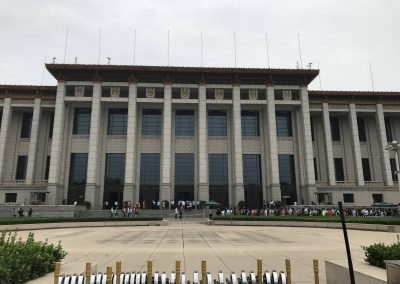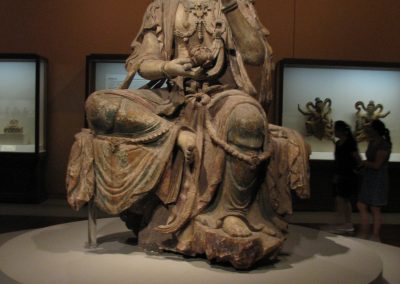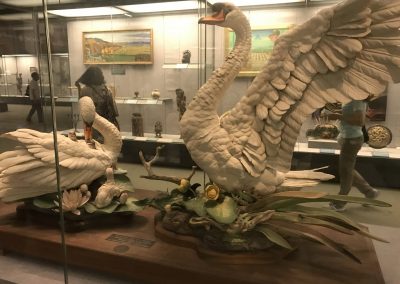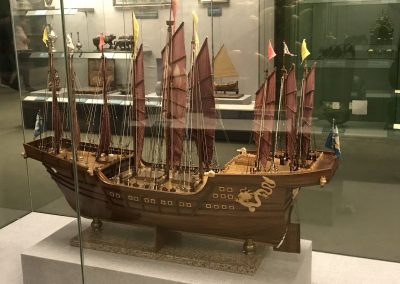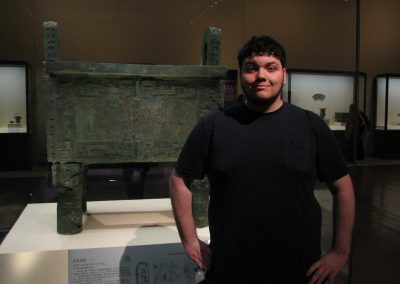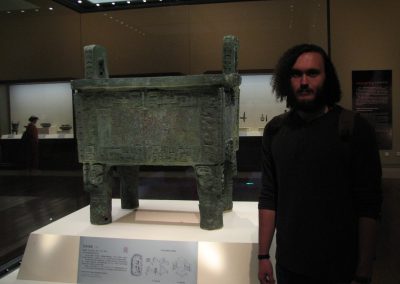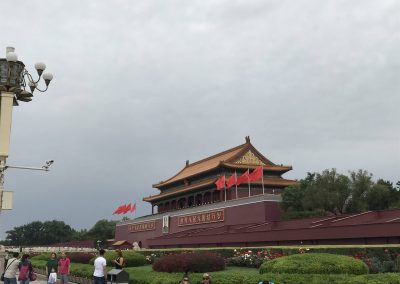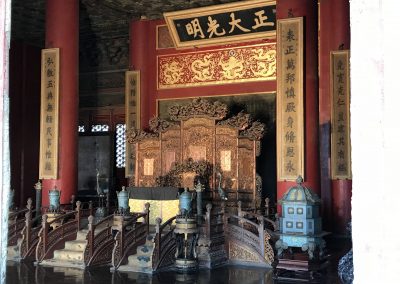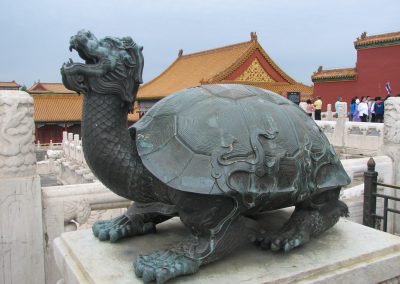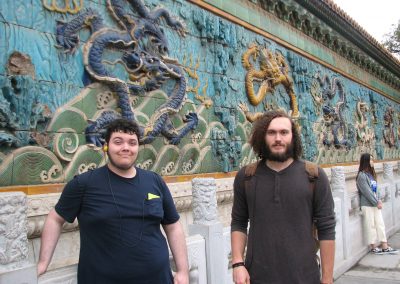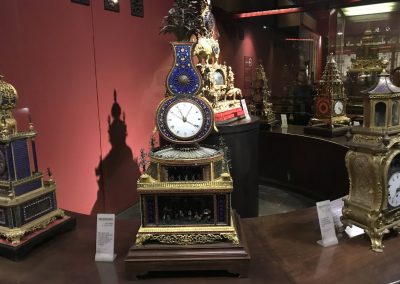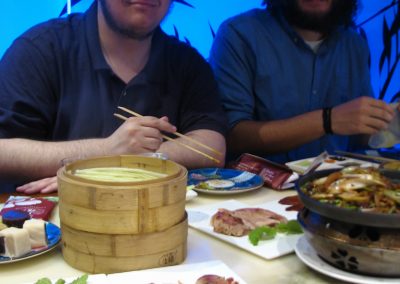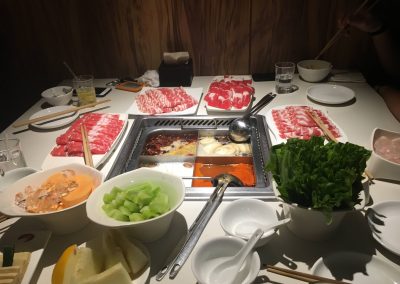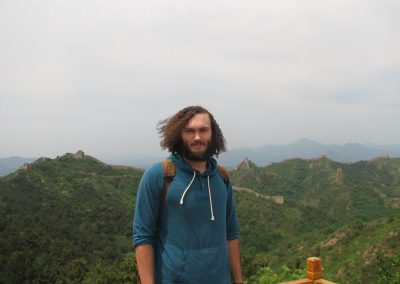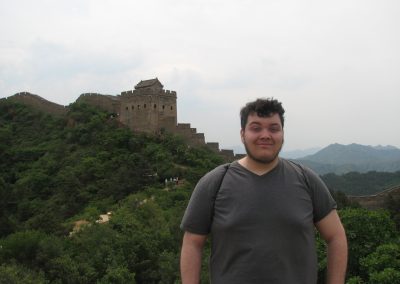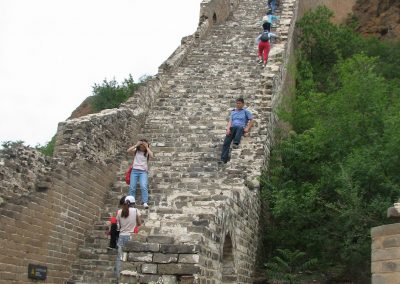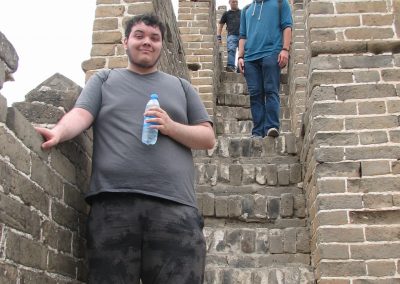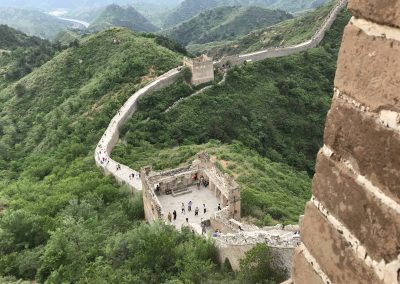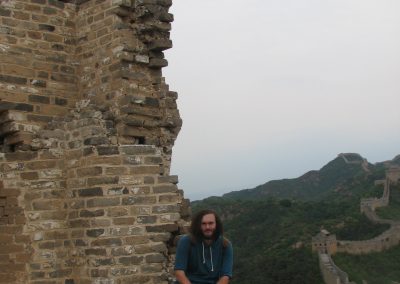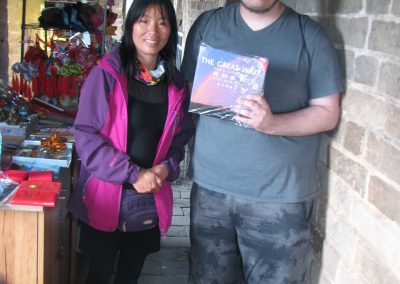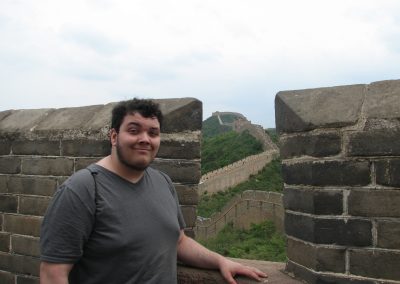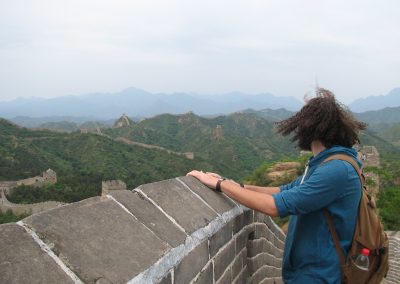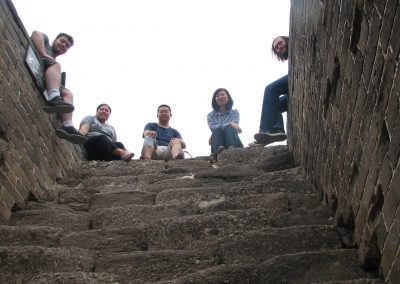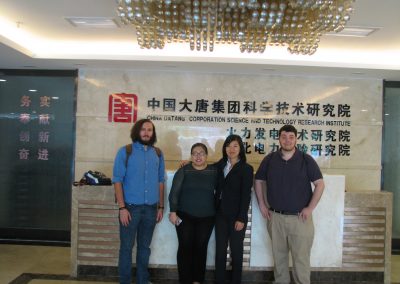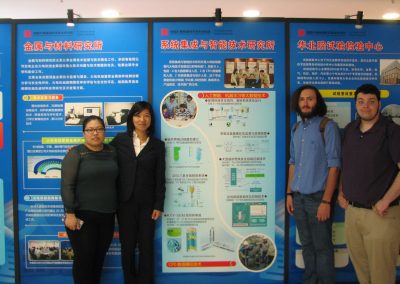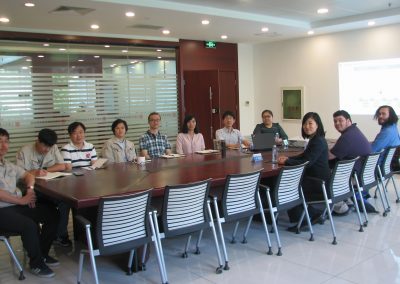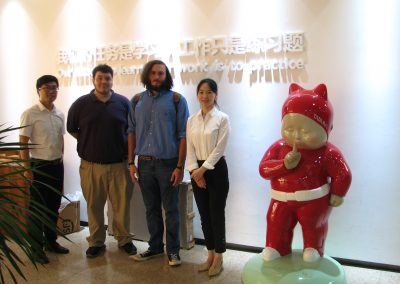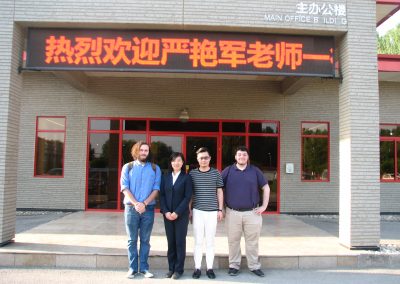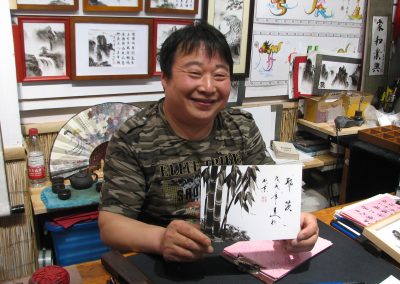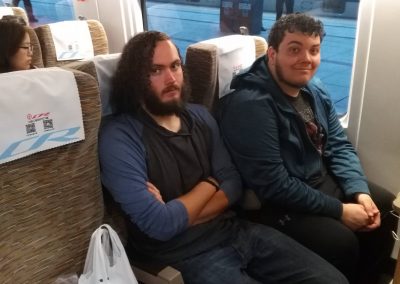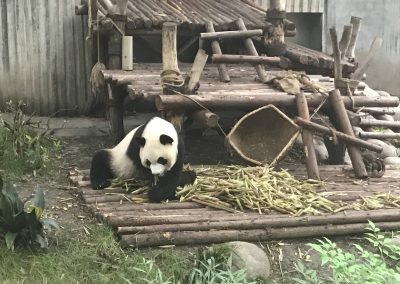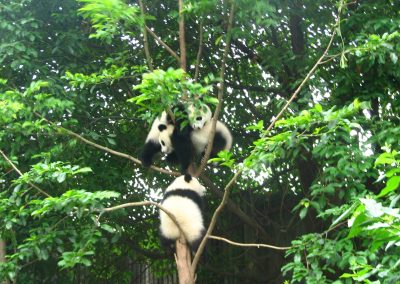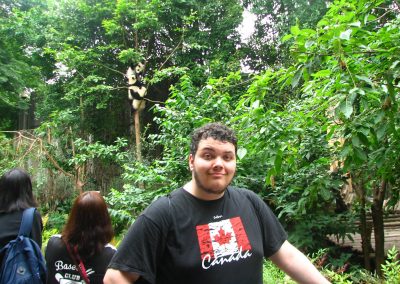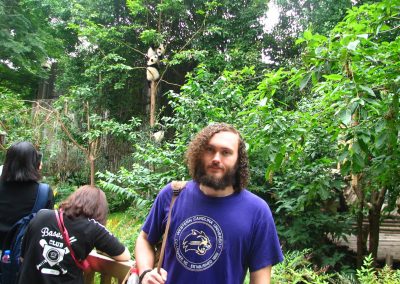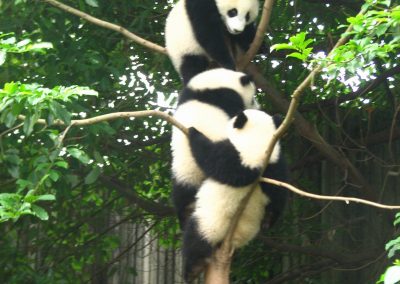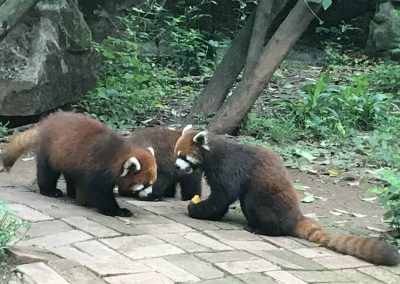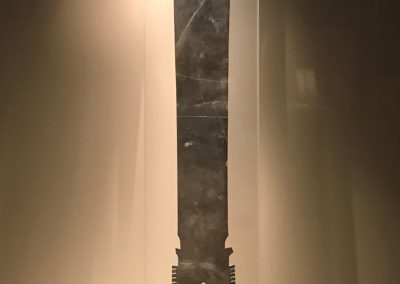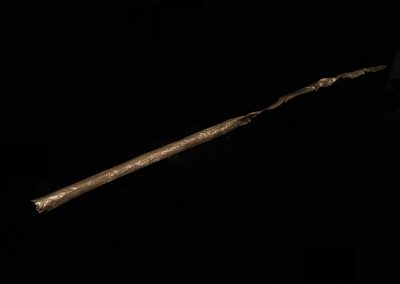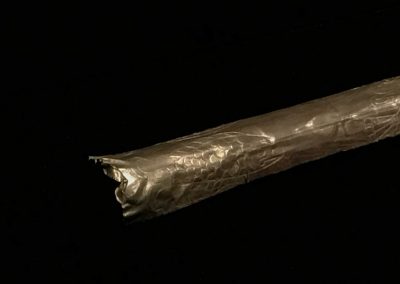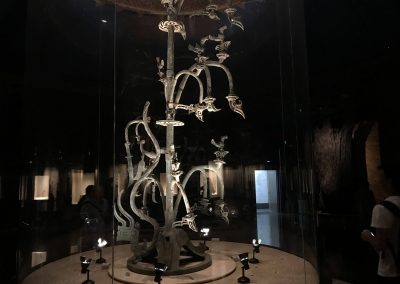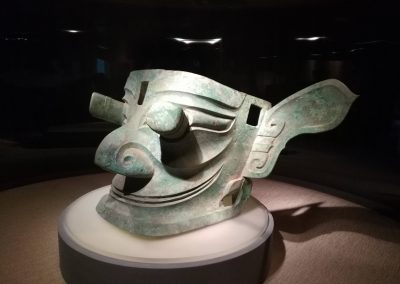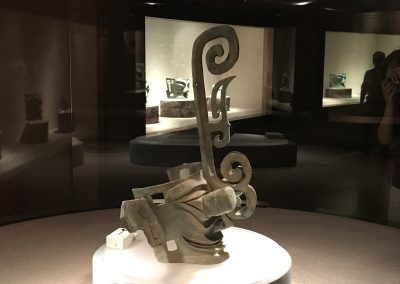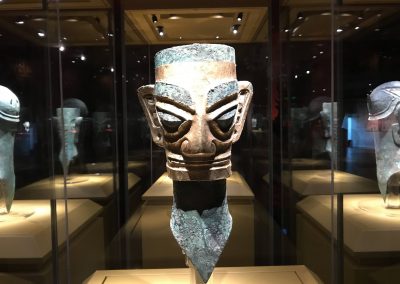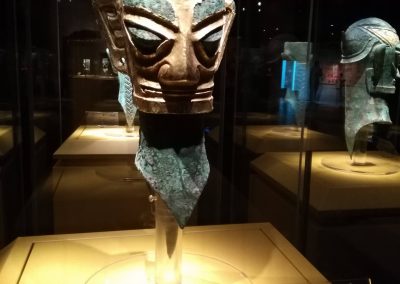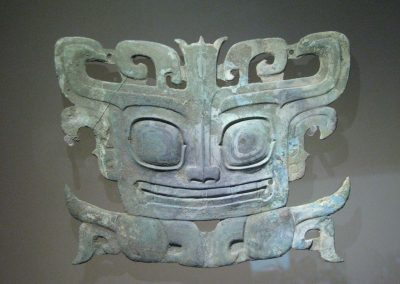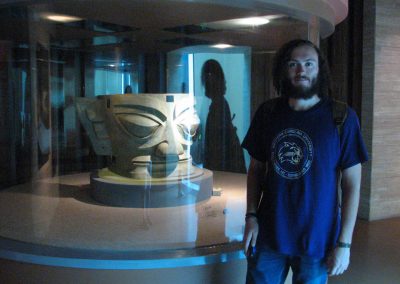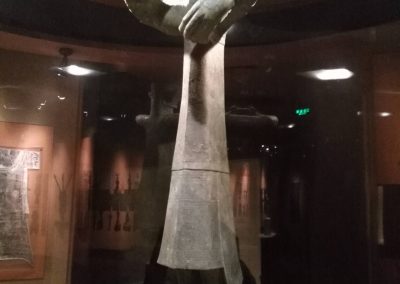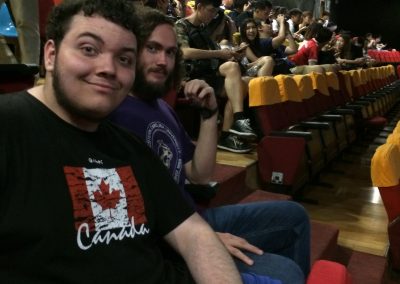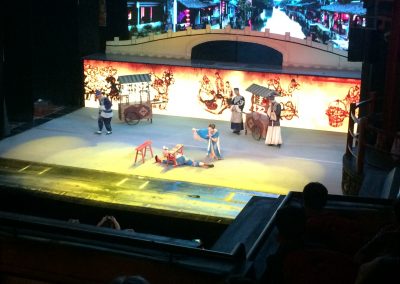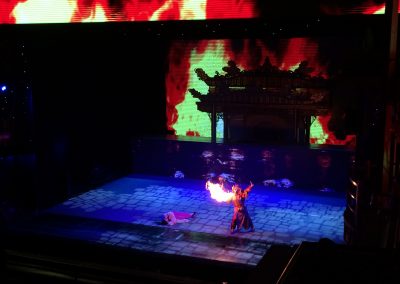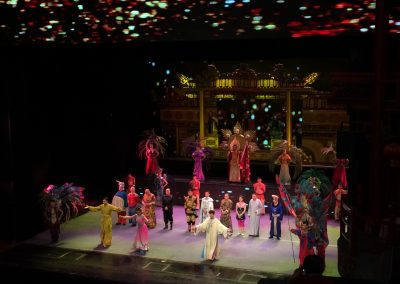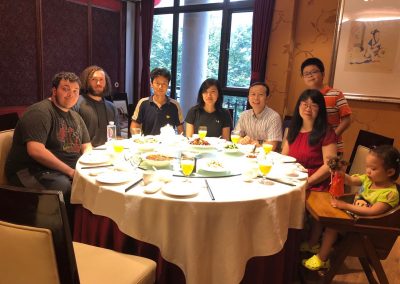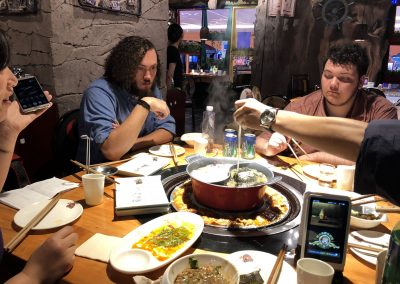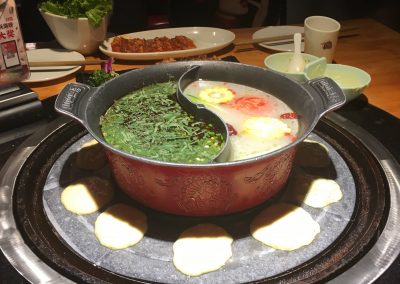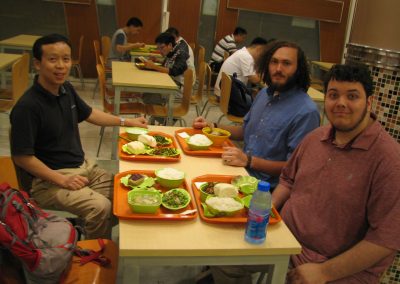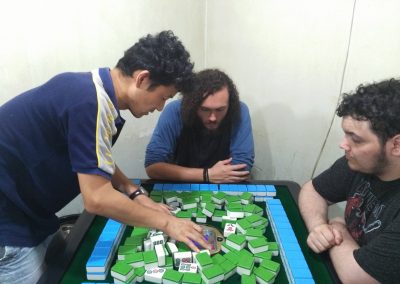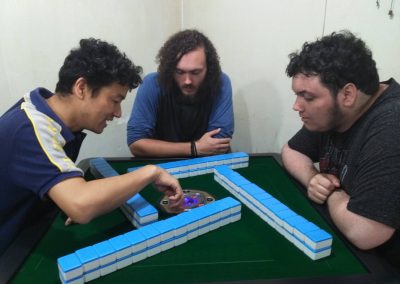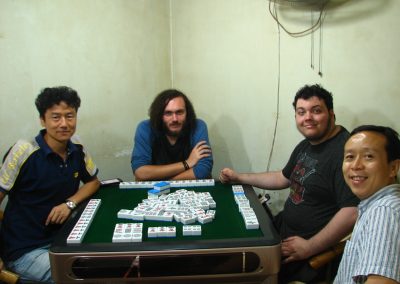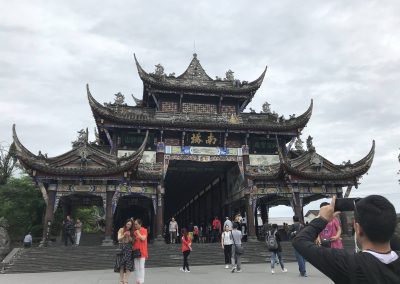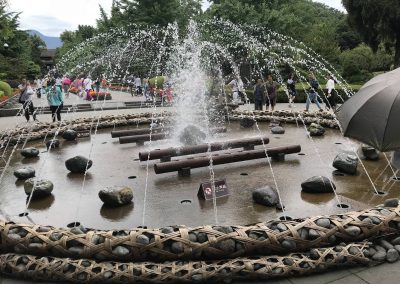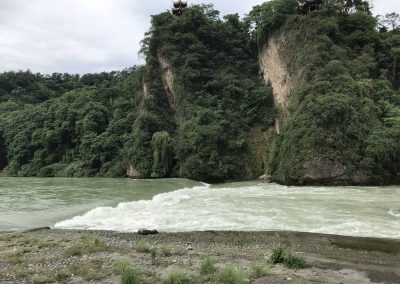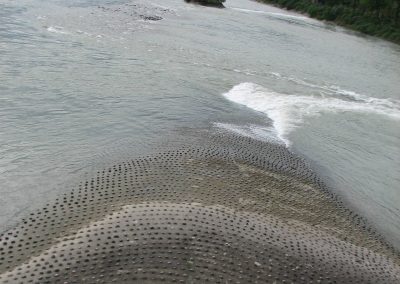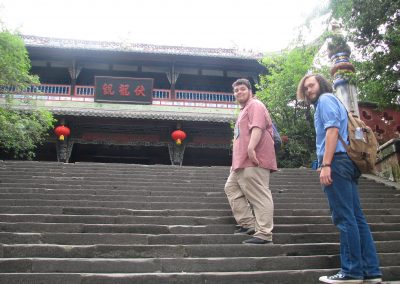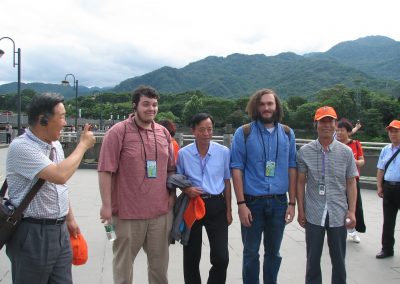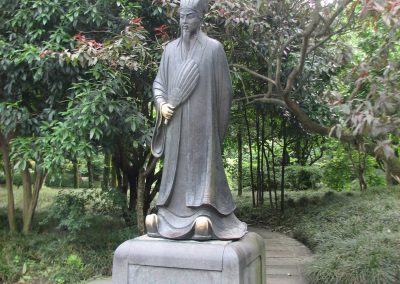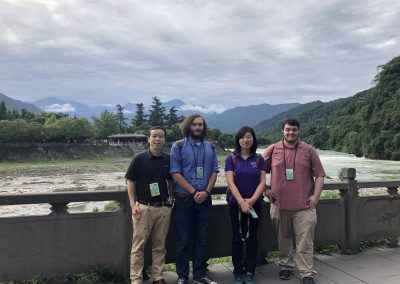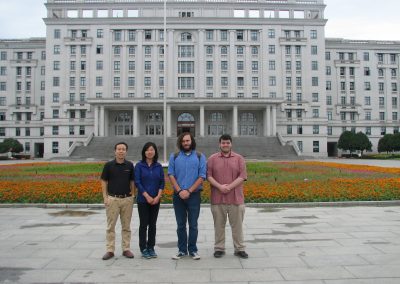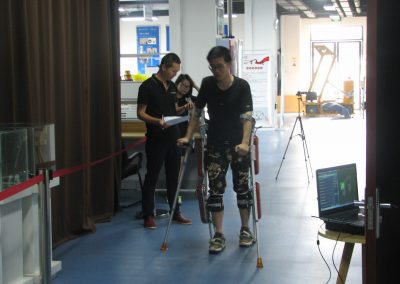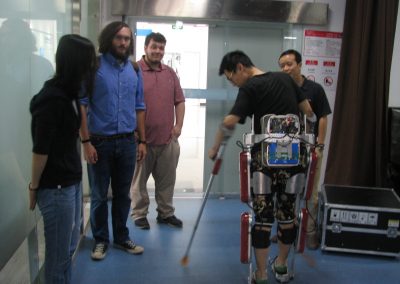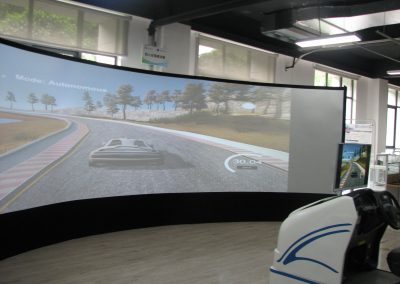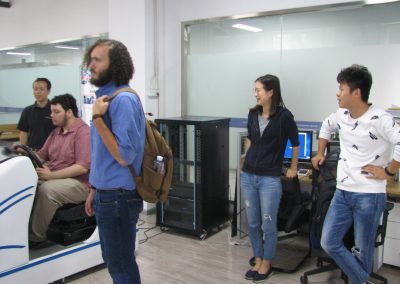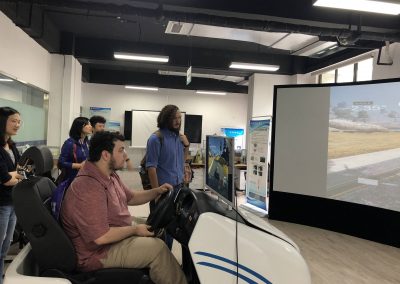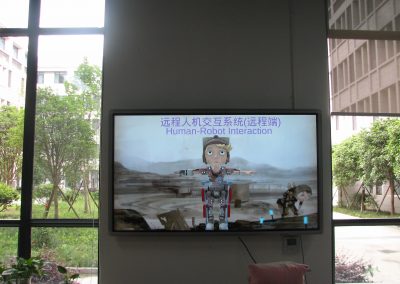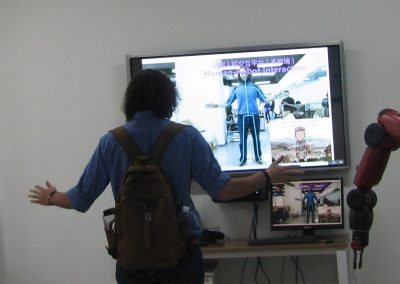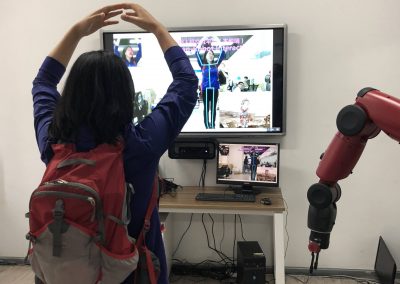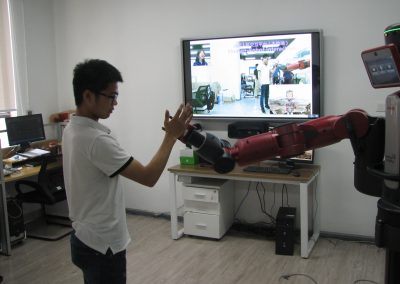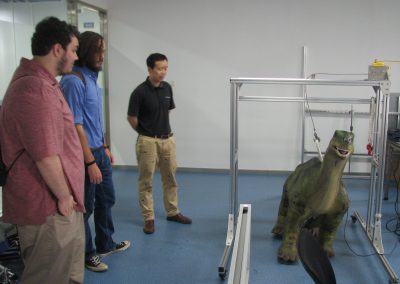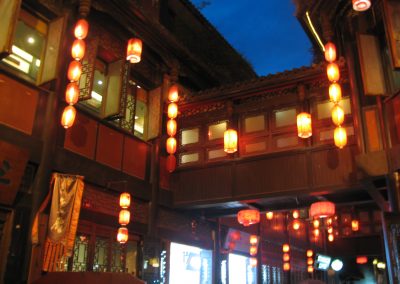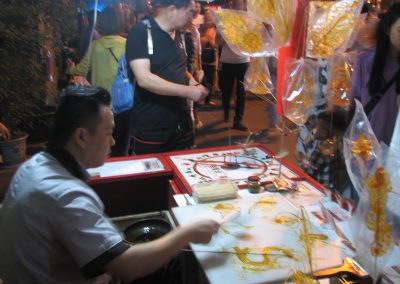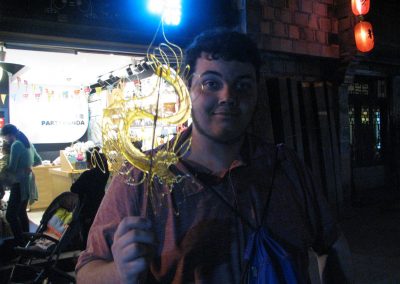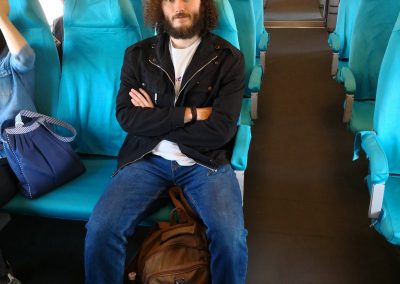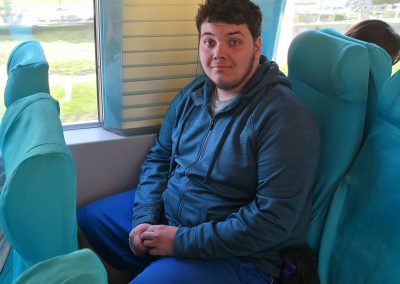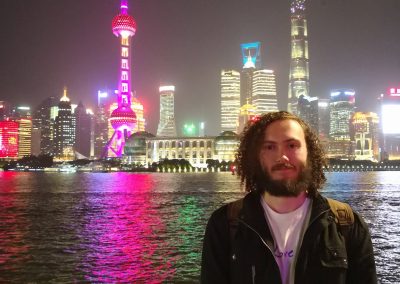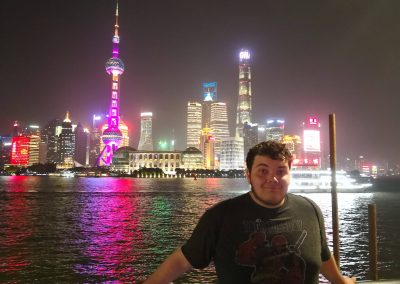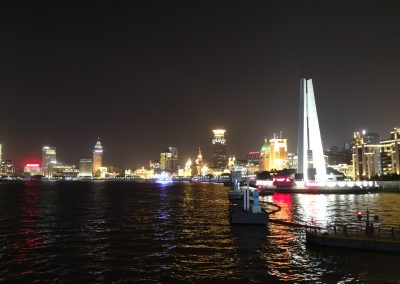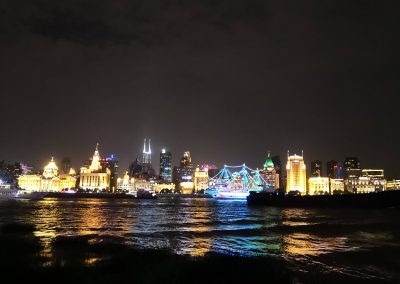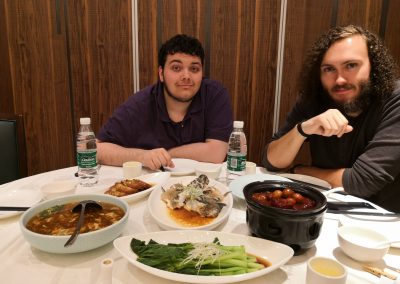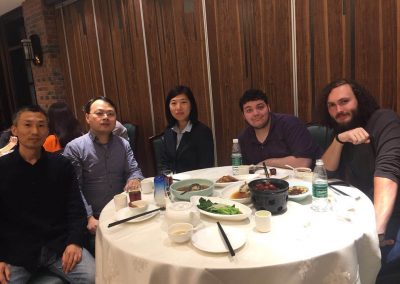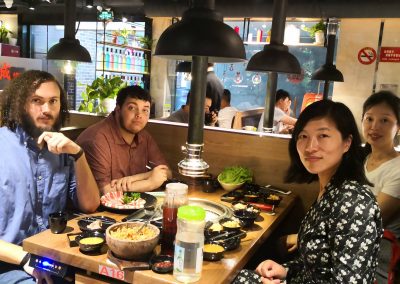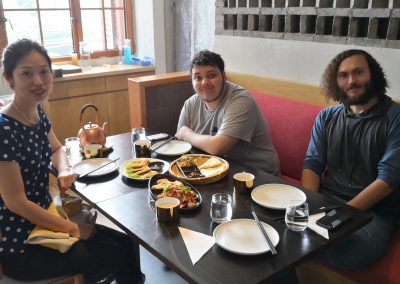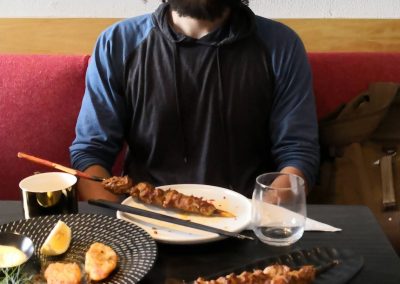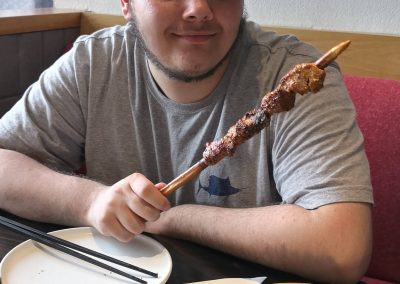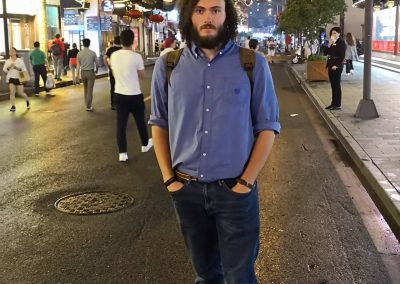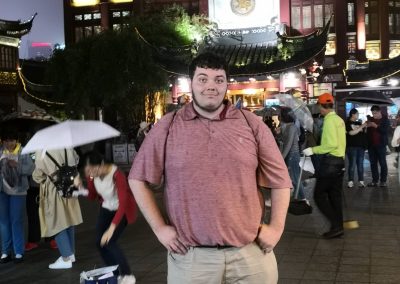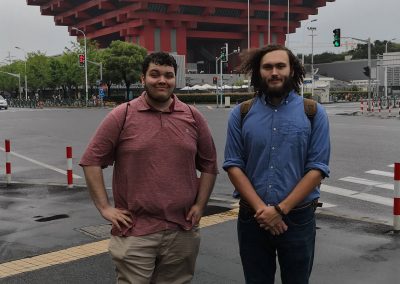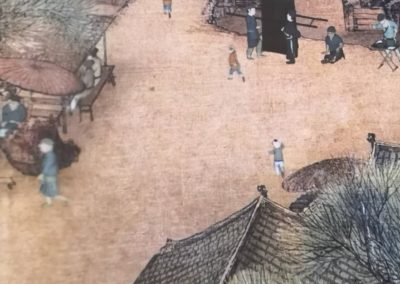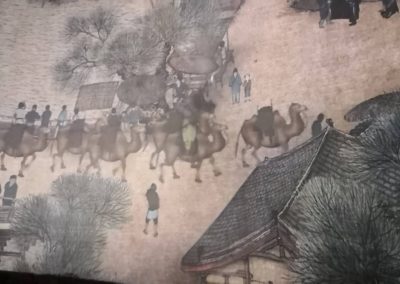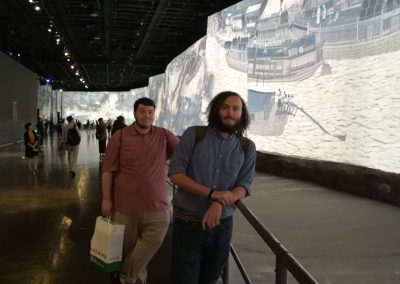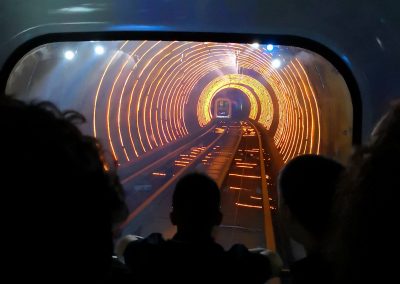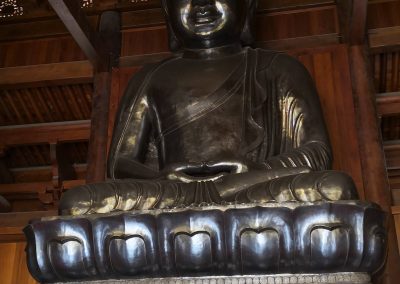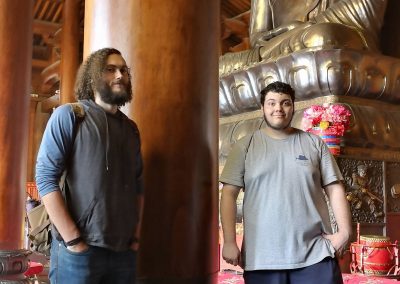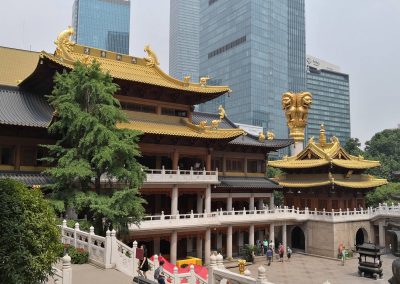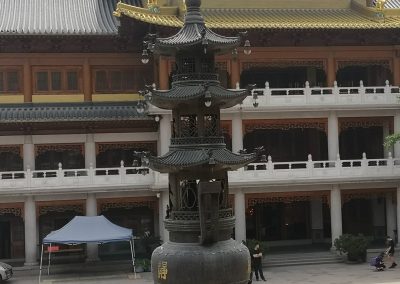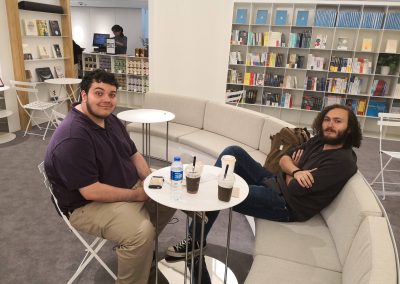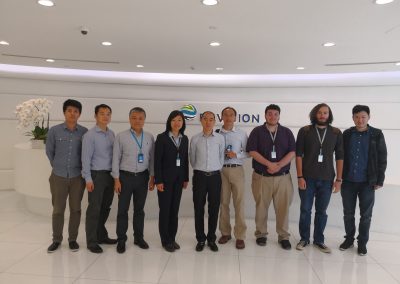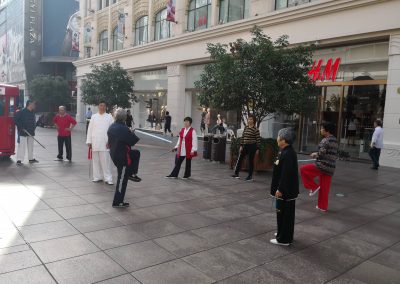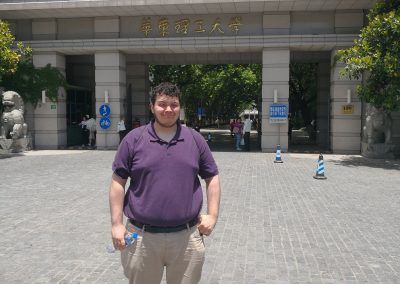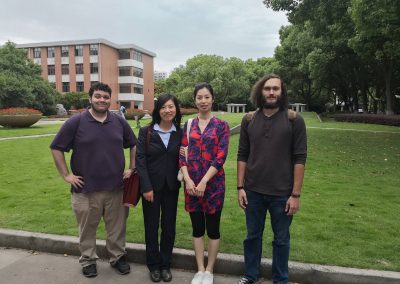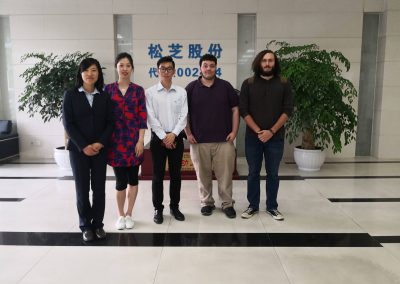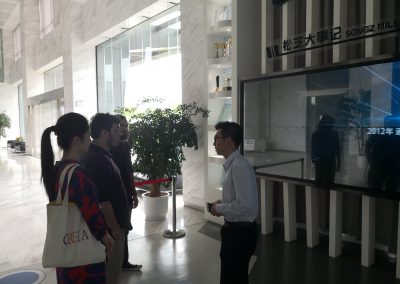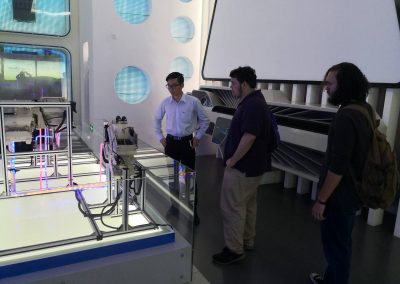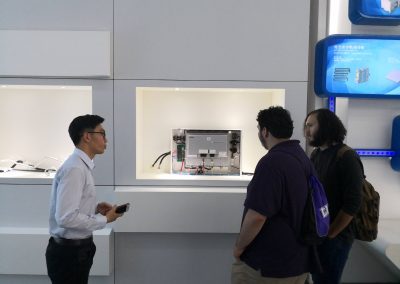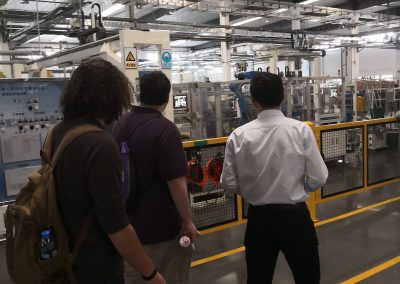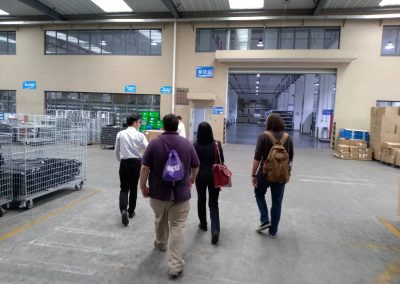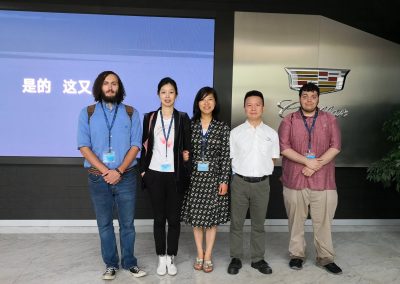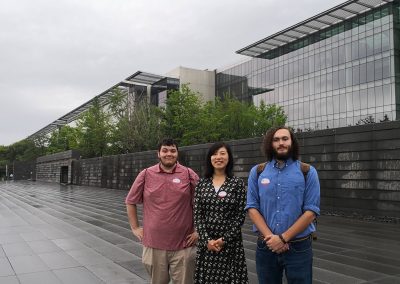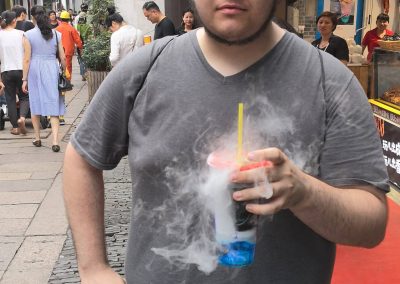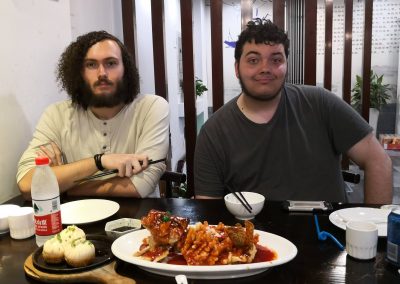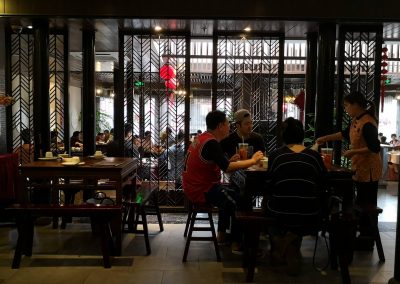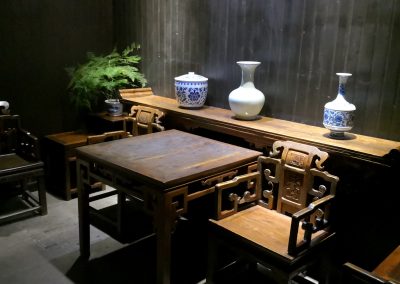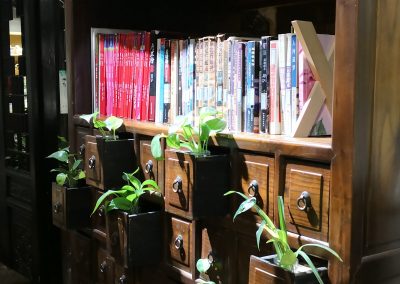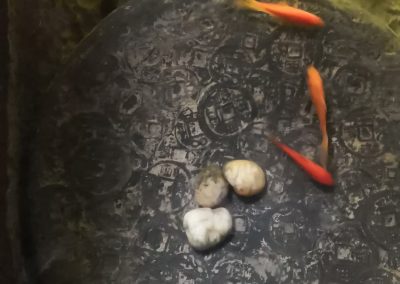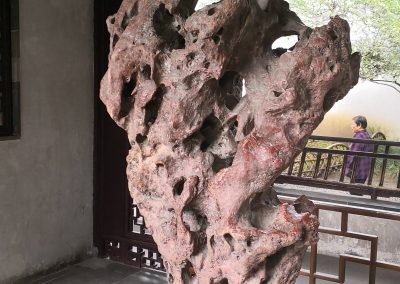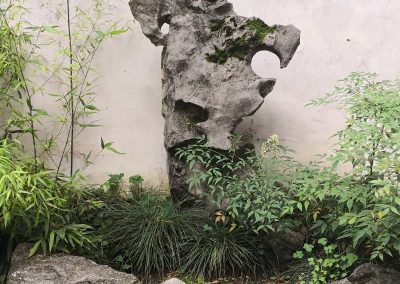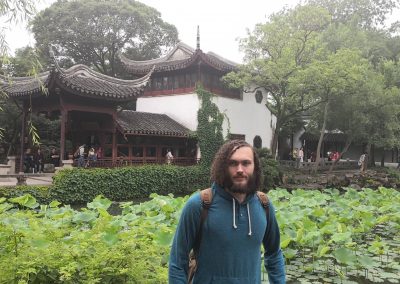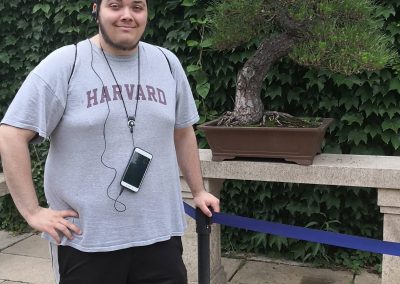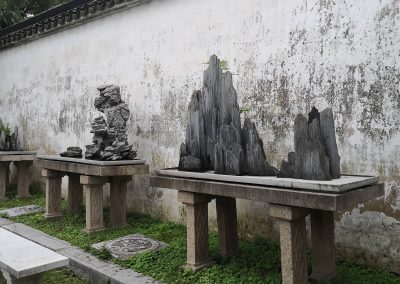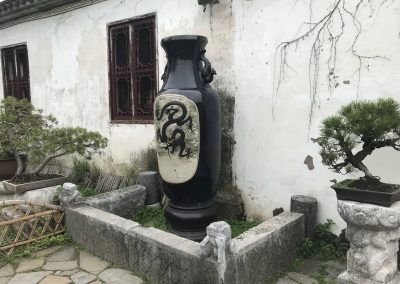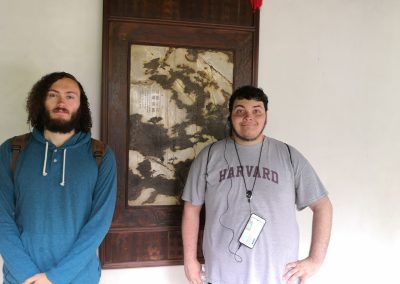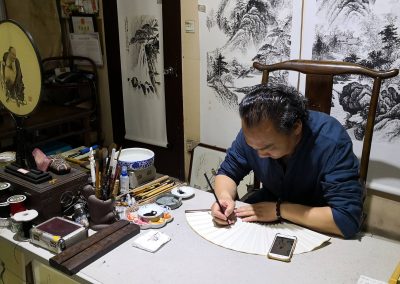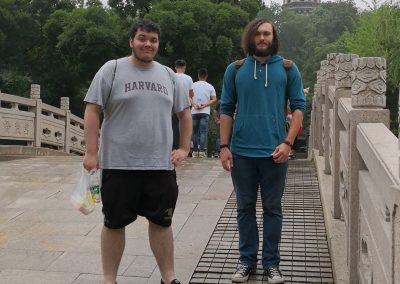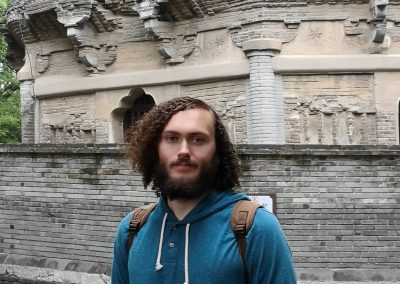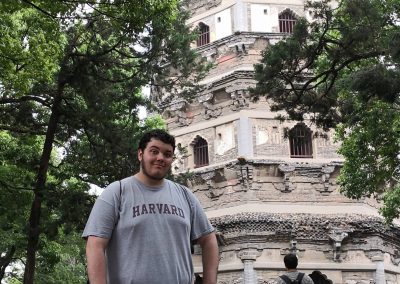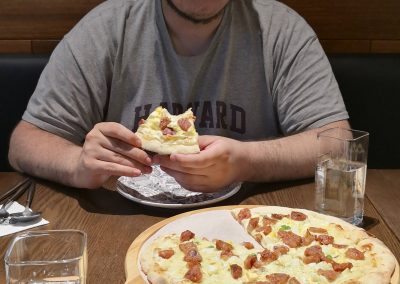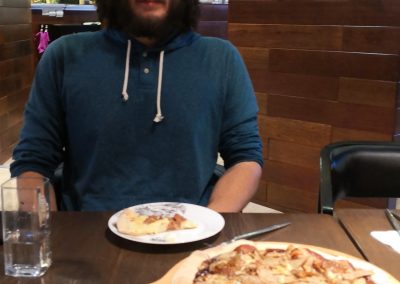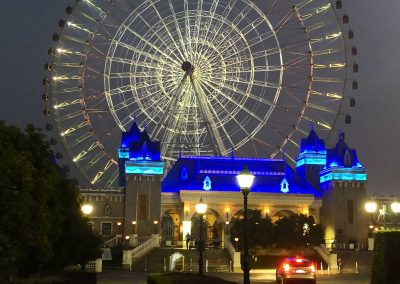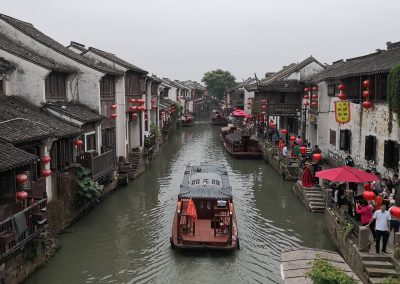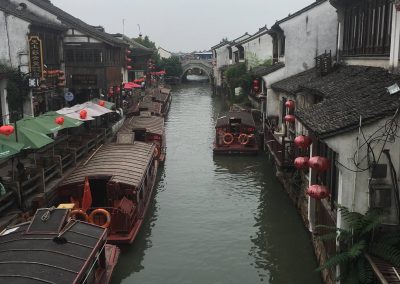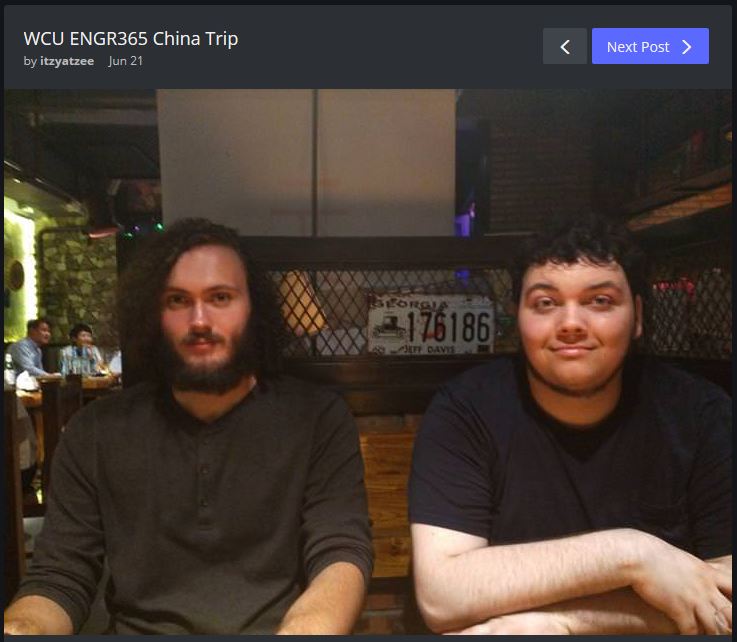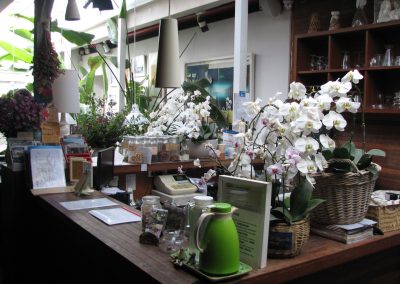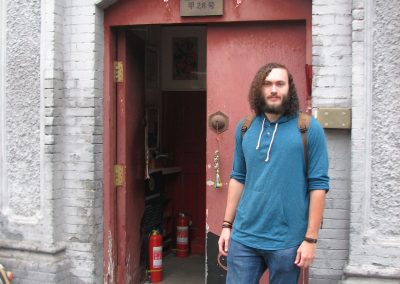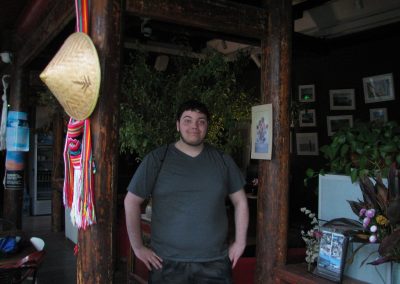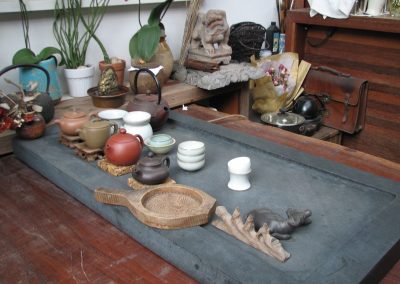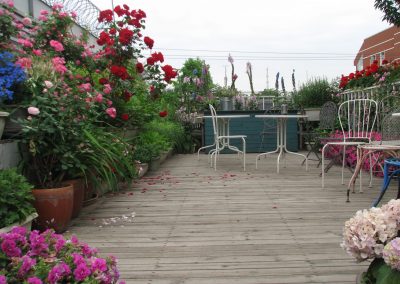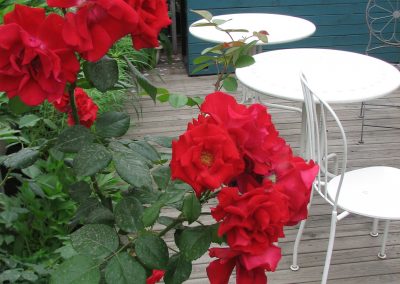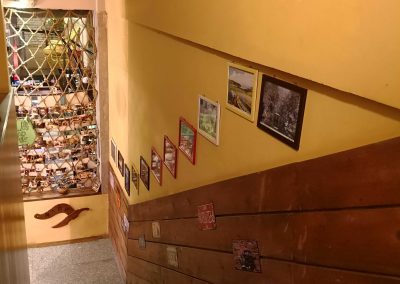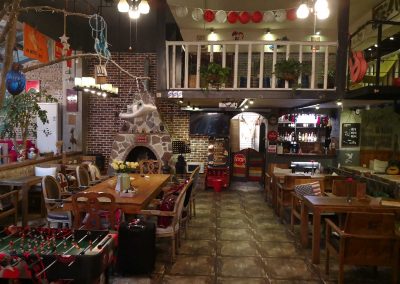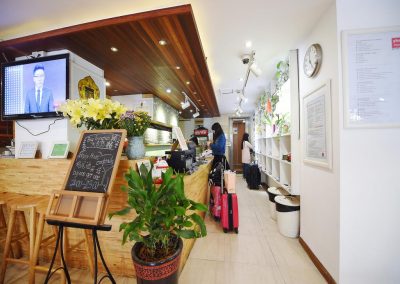ENGR 365 Global Engineering and Technology, 2018, to China
The first faculty-led travel course offered by the College of Engineering and Technology at WCU
The trip happened on May 15 – May 29, 2018 in this order: Beijing → Chengdu → Shanghai → Suzhou. We arrived in PEK (Beijing) and departed from PVG (Shanghai). Planned or equivalent activities have all been carried out, and we went to a few more attractions and a show beyond the plan. The locations we visited are labeled as the landmarks on the map, powered by Google Map. Feel free to drag the yellow man’s icon at the lower right corner of the map to the major landmarks to enjoy a virtual tour.
Beijing TianAnMen Square

China Datang in Beijing

JinShanling Great Wall

National Museum

Forbidden City

South Luogu Alley

The Bund in Shanghai

China Art Museum

The People's Park in Shanghai

SONGZ

General Motors in Shanghai

East China University of Science and Technology

Yu Garden

City God Temple

Suzhou Museum

The Humble Administrator's Garden

University of Electronic Science and Technology of China

Panda Reservation Center

Sanxingdui Museum

Tiger Hill
SongHeLou Restaurant
SongHeLou Restaurant2
ChengPin Bookstore
QiLiShanTang
XiBo Restaurant
Jiang'An Temple
SiChuan Opera
DuJiangYan
Gallery
5
Zheng He (郑和 1371-1433) was a mariner, explorer, diplomat, fleet admiral during early Ming dynasty. His expeditionary voyages went to various parts of Asia and East Africa from 1405 to 1433. His larger ships stretched 120 meters or more in length with hundreds of sailors on four tiers of decks.
11
The Nine-Dragon Wall (Screen) with reliefs of nine Chinese dragons in the Imperial Palace was built in 1771. The Datong one was built in 1368, and the Beihai Park one in 1402.
17
This section has not been renovated and is more real for us to see the history. Wherever you go becomes a part of you somehow
18
The tiered barricade offered more layers of protection and stances to defend even if the enemies got onto the wall
21
The vendors along the Great Walls sell cold drinks and ice creams, which are carried and put into a big ice box there every single morning. This lady’s brother is a world-renowned photographer of the Great Walls
Dr. Xiang (Sharon) Ye and Mr. Zishen Pan
Mr. Pan (third from left) worked at Energy Envision and he arranged our visit there.
Dr. Xiang (Sharon) Ye
Dr. Xiang (Sharon) Ye (second from left) at China DaTang Corporation’s Science and Technology Research Institute got her Ph. D. from Syracuse University and used to visit MIT as a research scientist.
Ms. QianQian Yan and Mr. WeiChao Wang
TATA Wooden Door’s Headquarter and Factory #12. We were not allowed to take photos inside, but we toured the entire campus including residence buildings, offices, and factories.
30
Quality is never an accident; it is always the result of high intention, sincere effort, intelligent direction and skillful execution
High Speed Train
We took the high speed train (speed around 300 kilometers per hour) to go from Beijing to Chengdu
38
Zhang (璋), a jade tablet used in ceremonies about four thousand years ago. It is very thin and hence brittle, and yet there are fine carvings on its surface
61
The metrics to indicate how deep the sand needs to be cleaned out annually. The DuJiangYan is an ancient water system, originally constructed around 256 BC, as an irrigation and flood control project. It is still in use today.
62
Li Bing, then governor of Shu, and his son, led the construction of the DuJiangYan, which harnessed the river by channeling and dividing the water rather than simply damming it.
63
Fish mouth. The first water division site. The sandy water goes left and the clean water goes right
66
ZhuGe Liang (181-234, 诸葛亮) was a politician and strategist, believed to have invented an automatic transportation device, called the “wooden ox and flowing horse” (木牛流马)
101
Jiang’An Temple (静安寺, Temple of Peace and Tranquility), first built in 247 AD beside Suzhou Creek, relocated to its current site in 1216.
102
“If you reject the food, ignore the customs, fear the religion, and avoid the people, you might better stay home.” — So, we are the travelers.
Vice President Colin Yu and staff at Energy Envision
Energy Envision, the second largest wind farm provider in China, and the fore-runner of smart grid, digital monitoring and prognostics, electric car energy provider, energy storage, renewable energy.
Dr. ChunJie Chi
East China University of Science and Technology. Dr. Chi (third from left) used to visit Cornell University for a year, and she helped us to arrange the factory visits.
Mr. Nico Lee at SONGZ
SONGZ, the largest air conditioner provider in China for cars and trains, for both fuel-powered and electric cars/trains.
Mr. Wei Liu (刘玮)
General motors in Shanghai. This particular manufacturing site builds Cadillac and other high-end brands of GM with very high level of automation. We were not allowed to take photos inside, but we thoroughly enjoyed the tour led by Mr. Liu (fourth from left) from manufacturing to testing.
117
Huawei. They just finished the 5G tower prototype in Apr 2018 and expect to finish end-device designs such as cell-phones by early 2019
- Timothy Israel did a critical comparison between the United States and China on their relationships with the Korean Peninsula, on the “Information Literacy” SLO. Please click this link to read it.
- Wilson Yates did an online blog with photos/videos and commentaries about this trip, on the “Means of Expression” SLO. Please click the image below to read his blog.
Acknowledgement
Colleagues and Leadership
In no particular order, we thank
- Dr. Paul Yanik, Ms. Brianna Dostie (bdostie@
ciee.org) from CIEE, many colleagues in the School of Engineering and Technology, Associate Dean of CET, Dr. Chip Fergunson, and Dean of CET, Dr. Jeff Ray, for collaborating on our previous attempt and later; - Dr. Sudhir Kaul, Dr. Robert Adams, Dr. Wes Stone, Dr. Bill Yang, Dr. Jen Schiff (Chair of Liberal Studies Committee), and Dr. Kathleen Brennan (Department Head of Anthropology & Sociology), for helping to revise the proposal and approve this ENGR 365 P6 (world culture) category course;
- Dr. Todd Watson, Dr. Steve Henson, Dr. Beth Wall-Bassett, Dr. Nancy Luke, Dr. Alberto Centeno Pulido, Dr. Mimi Fenton, and Dr. Erin Adams for sharing their successful experiences on faculty-led courses;
- Dr. Ling LeBeau, the director of International Programs and Services, for her continuous encouragement and guidance from the very beginning and as recent as leading the Global Learning Academy that Dr. Yan participated in;
- Dr. Scott Rader for sharing his course proposal that sparked Dr. Yan’s desire to start this effort in the first place and his many suggestions later on;
- Dr. David Tyler for sharing his experiences, materials, and website, down to every detail, whenever there is a question;
- Mr. Neil Torda (torda@wcu.edu) for supporting this website’s development (https://yan.wcu.edu/) with the best solution for every feature that is asked; and
- Dr. Hugh Jack, School Director of Engineering and Technology and Cass Ballenger Distinguished Professor, for his unwavering support at every step of the course development and the financial support, when needed, without hesitation.
Our Hosts
Dr. Xiang (Sharon) Ye
Dr. Xiang (Sharon) Ye (second from left) at China DaTang Corporation’s Science and Technology Research Institute got her Ph. D. from Syracuse University and used to visit MIT as a research scientist.
Dr. Xiang (Sharon) Ye and Mr. Zishen Pan
Mr. Pan (third from left) worked at Energy Envision and he arranged our visit there.
Ms. QianQian Yan and Mr. WeiChao Wang
TATA Wooden Door’s Headquarter and Factory #12. We were not allowed to take photos inside, but we toured the entire campus including residence buildings, offices, and factories.
Dr. ChunJie Chi
East China University of Science and Technology. Dr. Chi (third from left) used to visit Cornell University for a year, and she helped us to arrange the factory visits.
Mr. Nico Lee at SONGZ
SONGZ, the largest air conditioner provider in China for cars and trains, for both fuel-powered and electric cars/trains.
Vice President Colin Yu and staff at Energy Envision
Energy Envision, the second largest wind farm provider in China, and the fore-runner of smart grid, digital monitoring and prognostics, electric car energy provider, energy storage, renewable energy.
Mr. Wei Liu (刘玮)
General motors in Shanghai. This particular manufacturing site builds Cadillac and other high-end brands of GM with very high level of automation. We were not allowed to take photos inside, but we thoroughly enjoyed the tour led by Mr. Liu (fourth from left) from manufacturing to testing.
Our Lodging
Our Transportation
- We used YiDao (an app like Uber), taxi, subway, and bus when we were in the cities.
- We took high speed trains (around 300 km/h or 187 mph) from Beijing to Chengdu and from Shanghai to Suzhou, a flight from Chengdu to Shanghai, a maglev (magnetic levitation) train (up to 420 km/h or 261 mph) from PuDong Airport to Shanghai downtown, and a sleeping car train from Suzhou to Shanghai.
- We took shuttles at the Panda reservation center and other tourist sites, the mountain cable car to get to the Mountain Top of the Great Wall, and the under-river tunnel cable car with music light show in Shanghai.
- We missed the ferry wheel ride as it was closed when we got there, but we had fun riding against an autonomous driving system, and it was hard to force it to go off track!
High Speed Train
We took the high speed train (speed around 300 kilometers per hour) to go from Beijing to Chengdu


